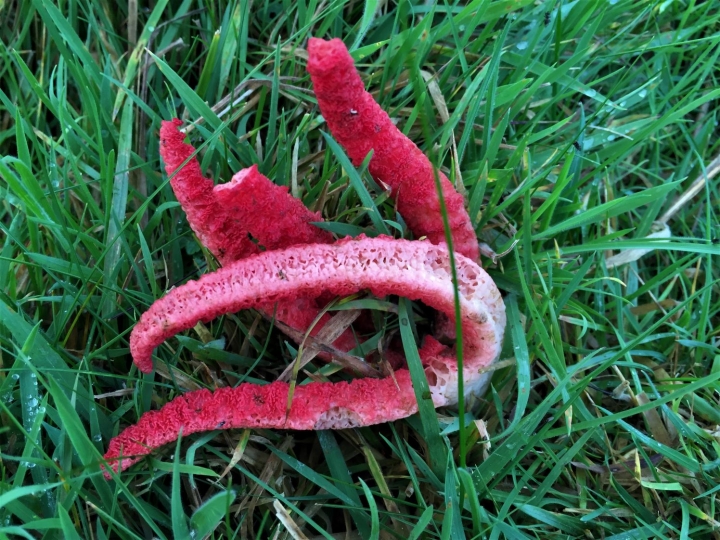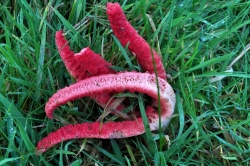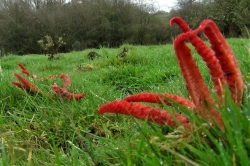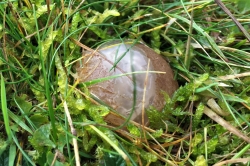Your basket is currently empty!
Home / Mushroom Guide /
Devil’s Fingers
Devil’s Fingers
Looks like an extra terrestrial creature from a Sci-Fi film crawling out of the earth. If its shape doesn’t scare you away, its smell will. It is an ‘alien’ species for sure which travelled over from Australia at the beginning of 20th century.
| Mushroom Type | |
| Common Names | Devil’s Fingers (EN), Octopus Stinkhorn (US), Bysedd Cythraul (CY), Okratek Australijski (PL), Tintahalgomba (HU) |
| Scientific Name | Clathrus archeri |
| Synonyms | Pseudocolus archeri, Aserophallus archeri, Lysurus archeri |
| Season Start | Jun |
| Season End | Sep |
| Average Mushroom height (CM) | |
| Average Cap width (CM) |
Fruiting Body
Starts its life under the soil’s surface (subterrain) in a more or less spherical egg-like structure, called a witch’s egg which is attached to the substrate through a visible white mycelial cord.
This egg is 2–4 cm in diameter. Skin (exoperidium) is smooth, white, off-white to dark cream coloured. It contains a thin gelatinous layer and the immature, cage-like miniature fruit body (the individual arms are attached at their apex).
Once hatched, the witch’s egg fruitbody emerges and leaves the remnants of the egg as a volva.
Fruit body is formed of 4–8 finger-like arms, connected with a thick, short stem-like structure. The individual arms are 3–7 cm tall, pinkish to bright red (like red meat flesh), covered with a glutinous layer that contains the spores. Flesh is soft, spongy, fragile, hollowed and somewhat pinkish.
Habitat
Fruiting in smaller groups, mostly on soil or woodchip mulch. More often recorded from parklands and cemeteries. Saprotrophic on soil.
Possible Confusion
In its early stage, before hatching it’s a witch’s egg, pictured, which can be confused with any of our native stinkhorns, but after that it is rather impossible.
Taste / Smell
Inedible. Taste indistinctive (weakly somewhat radish-like when immature), smell like rotting meat.
Frequency
As a non-native species, it is rare and rarely recorded, however, it is constantly spreading and appearing more and more areas in South and Southwest England and Cornwall.
Spores
The spores are trapped into a mucous layer covering the inner wall of the octopus’ arms. Spore print is olive-brown, but you can’t really make a spore print. Spores elongated-ellipsoid, smooth, thick-walled.
Other Facts
Described from Tasmania, Australia; It is native to Australia, New Zealand and southern areas of Africa.
Like all the stinkhorns, it starts its life in an egg-like structure, which is commonly called a witch’s egg (in this stage it is considered edible). Once it has hatched it becomes an octopus-like strange looking mushroom. It doesn’t have a long shelf-life, a few days after it hatched its egg, it collapses and rots into the substrate.
Same as all the stinkhorns, this species distributes its spores with the help of insects. The mushroom attracts the insects with its rotting meat-like odour. When the insects land on the inner surface of the mushroom, its spores (trapped into a mucous layer on the inner wall of the individual arms of the ‘octopus’) attach to their feet and in this way they will leave the spores behind wherever they landing after this encounter.



























Leave a Reply